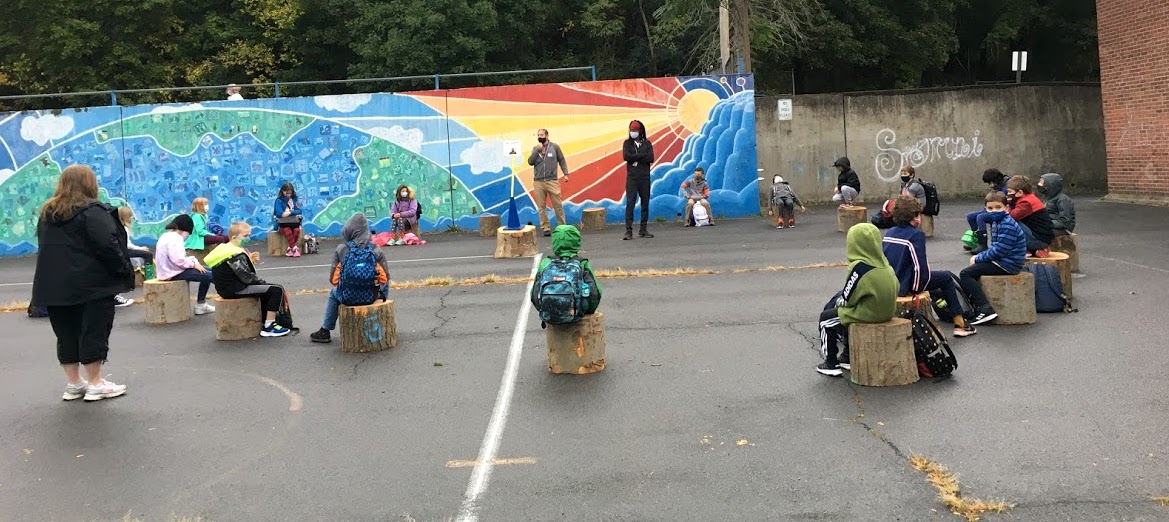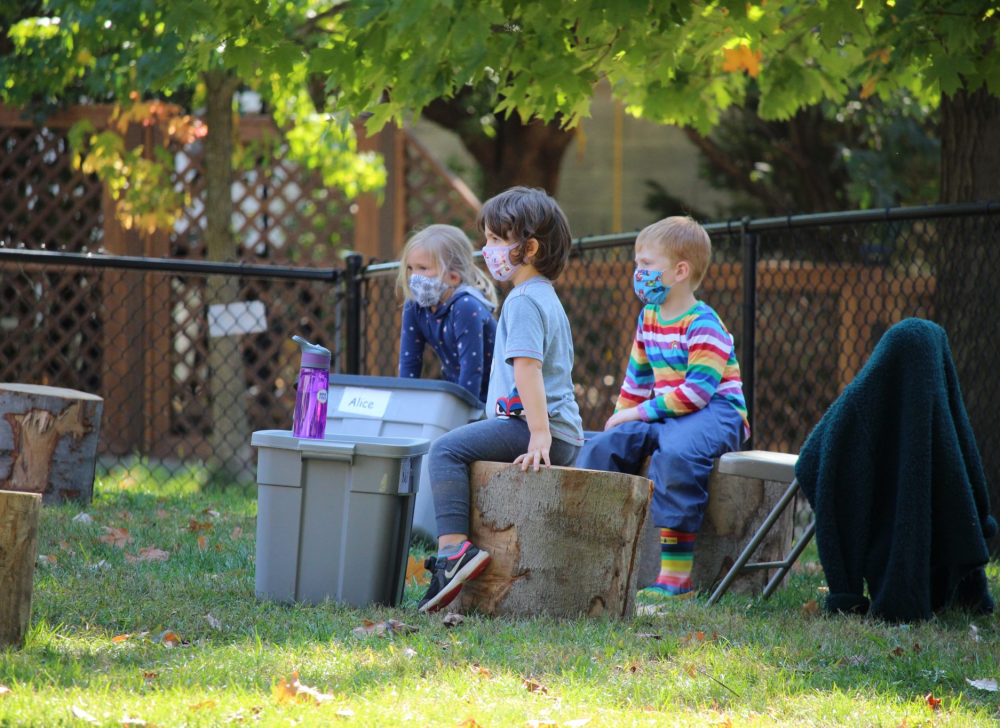
Falls Creek Elementary School
An asphalt surface at Falls Creek Elementary School in Ithaca, New York, became an outdoor space for classes. Developing outside spaces was a project of the Ithaca Children’s Garden in partnership with the Ithaca City School District and the Cornell University master’s of public health program.
Getting children outdoors is important for many reasons, but it’s often not a priority.
Kids need sunshine, exercise and the chance to play together, which allows them to make up their own games, figure things out and learn to interact with others. They also can come to know nature, writes Claire McCarthy of Harvard Health Publishing.
Being outdoors has particular value in the midst of the coronavirus epidemic, allowing for greater social distancing and lowering the risk of virus transmission.
An out-of-school time organization, Ithaca Children’s Garden, has partnered with the Cornell University Master’s of Public Health program and eight elementary schools in Ithaca, New York, to develop outdoor spaces at the schools funded by a Farm to Table grant.
Erin Marteal, executive director of the Children’s Garden, visited the schools and did walkabouts with the principals, a landscape designer and other school staff. They found spaces for outdoor learning sites and looked at the barriers to their use.
It’s been part of a community effort that has helped the district open in-person classes on Oct. 5 in the midst of the coronavirus pandemic, and it was partly informed by recommendations from Green Schoolyards America.
“Outside is the safest place for people to congregate,” Marteal said.
Children have spent a lot of time indoors because of the necessity of sheltering in place during the pandemic, she said. The isolation and stress of the pandemic has had an impact.
“So much data shows young people are struggling with mental health challenges,” she said. The data also shows that being in nature reduces stress, she said.
But the project goes beyond the pandemic. It’s about children’s “happiness and joy,” Marteal said. “Creating spaces that provide a sense of belonging and joy are so important.” It’s also about fostering social development and improving learning, she said.
Developing outdoor spaces is the goal of the Healthy Kids, Healthy Planet toolkit created by Cornell’s master’s of public health program and the Cornell Atkinson Center for Sustainability.
The toolkit can help schools and youth organizations see potential uses for the grounds surrounding their buildings. Start by looking at spaces and brainstorming ways they can be used, it says. A wooded area could be a site for kids to create a trail, or a side yard could become an outdoor classroom. An area of asphalt could even become an outdoor meeting area with milk crates for kids to sit on.
Adults could also ask kids how they might imagine the spaces.
The Ithaca Children’s Garden found a number of outdoor spaces for each school.

With learning spaces like the Ithaca Children’s Garden, children have more chances to be outside during the day.
“The plan allows every class to have a dedicated space,” Marteal said. While classes may spend less time outside during the cold winter months, PTAs are nevertheless collecting outdoor clothing for kids, including rain gear and snow boots, she said.
The toolkit suggests that staff imagine how various materials could be used, from a tarp kept handy to take outside to spread on the ground to a picnic table to a boundary fence.
At the Ithaca schools, picnic tables and tree stumps will be the main outdoor furniture.
Classes or groups of kids could also become responsible for taking care of an area. They could rake leaves, shovel snow or keep materials and equipment at hand. They could also be in charge of the sign-up process for using the area, if it is a shared space, the toolkit suggests.
It sets out goals and benefits of being in the outdoors, such as learning to care for natural environments. Spending time in nature has been shown to help kids in emotional regulation, for example. It discusses organized activities and curricula.
The kit also has information about the barriers to going outdoors as a group and how to overcome them. Barriers include lack of time, concerns about behavior management, physical safety and even dirt. A section on strategies discusses how to build support for developing outdoor spaces, how to set behavior expectations and even how to use them for short break periods for kids to emotionally recharge.





























